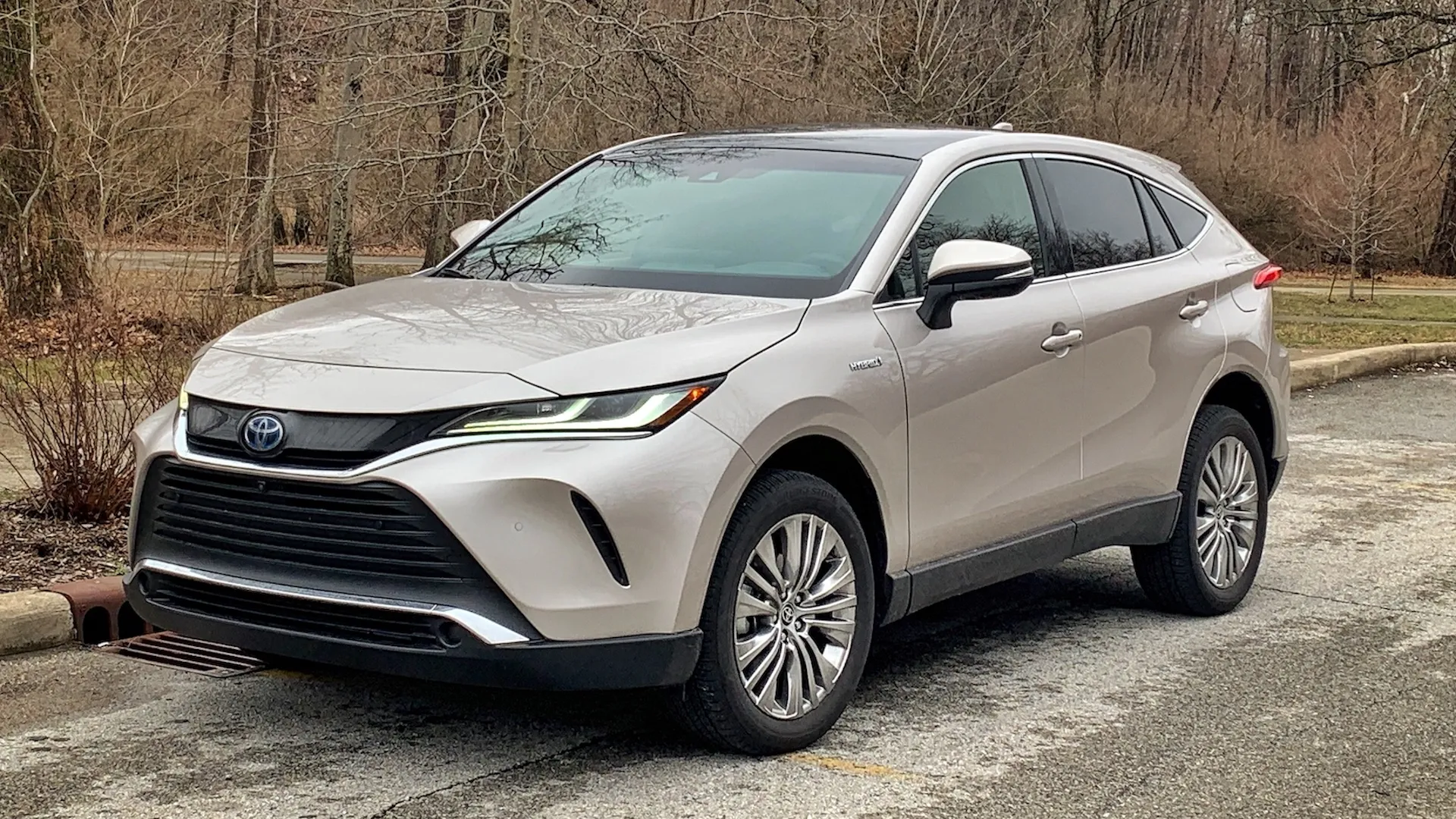When consumers shop for SUVs, most are drawn in by the same broad strokes: all-wheel drive, raised ground clearance, cargo space, and a heightened sense of safety.
But once the excitement of trim levels, horsepower figures, and touchscreen sizes wears off, the day-to-day usability of an SUV becomes a far more pressing issue—especially one that’s rarely discussed with as much enthusiasm: ease of entry and exit.
Whether you’re a parent strapping in toddlers, a senior seeking less physical strain, or just a driver who gets in and out of your vehicle a dozen times a day, that simple act—stepping in or sliding out—matters more than most realize.
The rise of SUVs and crossovers has often come at the cost of accessibility. While manufacturers race to outdo each other with rugged styling, off-road specs, and coupe-like silhouettes, many buyers are discovering the real-world limitations of these design choices.
A high step-in height can quickly become a literal pain point. A sloped roofline might look sleek, but it forces you to duck—sometimes sharply—just to avoid bumping your head. In fact, these design decisions can turn a stylish SUV into a daily ergonomic obstacle course.
Conversely, there are SUVs that surprise us with their practical, user-focused design. These models understand that not every buyer is scaling boulders or chasing sand dunes. Instead, many just want to get in and out comfortably, whether it’s during school pickup, a grocery run, or a medical appointment.
These vehicles prioritize low step-in heights, flat floor designs, wide door openings, and intelligent seat placement—all of which significantly improve ease of use. And here’s the real kicker: some of the most accessible SUVs on the market still offer solid ground clearance and all-wheel-drive capability. It’s not a trade-off. It’s smart engineering.
In this in-depth article, we explore two ends of the spectrum. First, we’ll look at five SUVs that offer exceptional ease of access, featuring low step-in heights and ergonomic door openings that make them perfect for those with mobility concerns or anyone who simply values comfort and simplicity.
These aren’t necessarily the flashiest models on the market, but they excel where it counts in daily life—getting in and getting out without effort, strain, or discomfort.
Then, we’ll dive into five SUVs that are more challenging to enter, either due to high ride heights, narrow or awkwardly placed doors, or coupe-style rooflines that compromise headroom.
These are popular models, often bought for their rugged looks or luxurious appeal, but they come with practical caveats. Whether you’re a tall driver needing to duck or a shorter passenger needing a step, these vehicles make access a more complicated process than it needs to be.
Ultimately, SUV accessibility isn’t just a footnote—it’s a fundamental part of user experience. It affects how much we enjoy our vehicles, how safe they are for our families, and how suitable they are for our physical needs as we age. It’s also one of those specs that doesn’t always show up in brochures or comparison charts.
That’s why we’ve taken the time to highlight it here, giving both sides of the coin the space they deserve. From the user-friendly Subaru Forester and Kia Soul to the demanding Toyota 4Runner and Jeep Wrangler, we unpack what it means to step up—or duck down—into your daily driver.
Also Read: 5 Cars With Dependable Infotainment and 5 With Buggy Screens
5 SUVs with the Lowest Step-In Heights
In the automotive world, “step-in height” refers to how far off the ground you must lift your foot and body to enter a vehicle. While some may relish the commanding view offered by towering SUVs, others prioritize ease of access, especially the elderly, those with physical limitations, parents with small children, or anyone tired of climbing into a vehicle like they’re boarding a ship.
The SUVs below are masters of accessibility, featuring low door sills, ergonomically placed seats, and thoughtful design touches that eliminate the struggle of entry and exit.
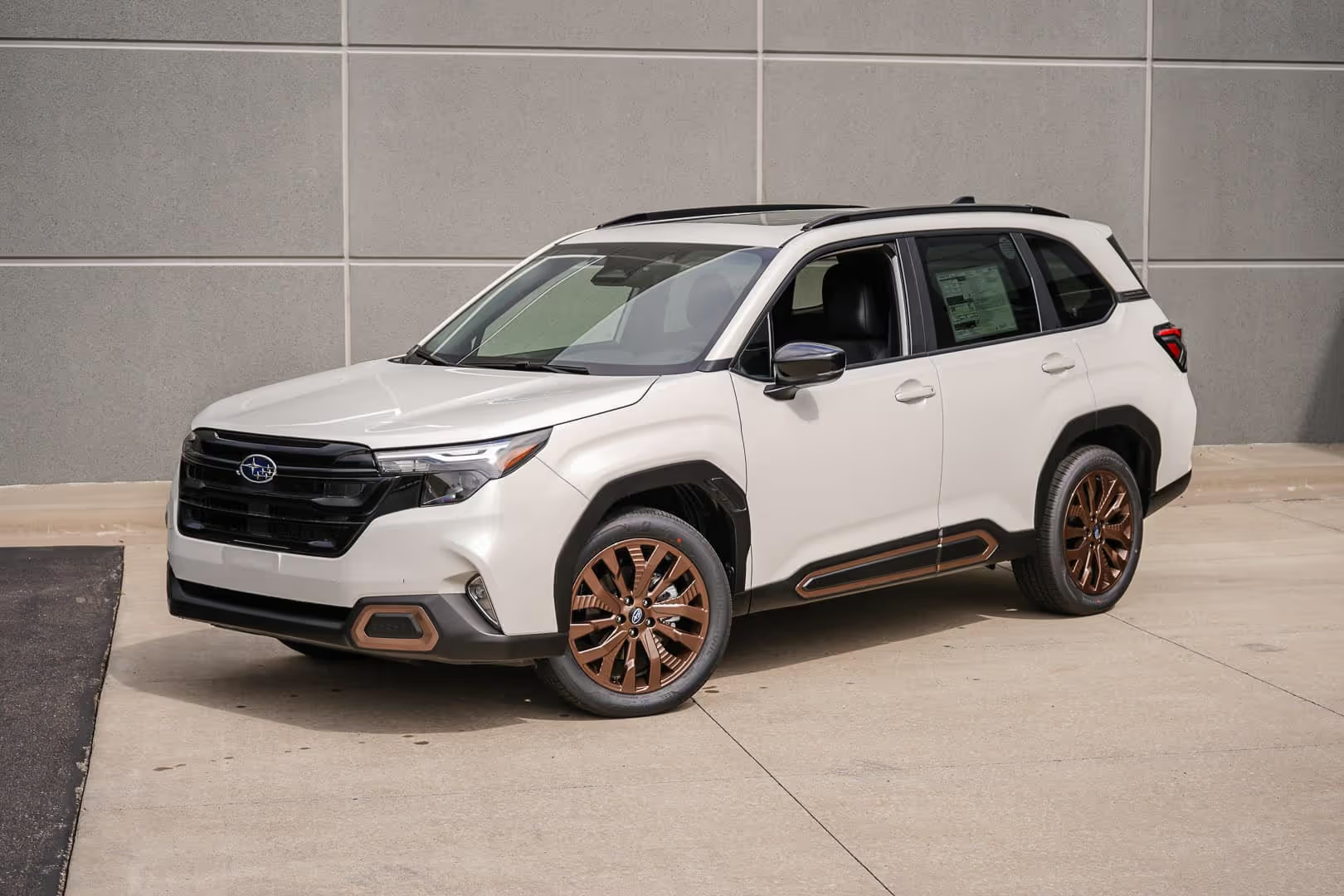
1. Subaru Forester
The Subaru Forester remains one of the few SUVs that manages to combine practicality, AWD capability, and superb ease of access. With a step-in height around 16 inches, it offers a near-ideal middle ground between a traditional sedan and a crossover.
What makes the Forester particularly accommodating is its wide and tall door openings. You can swing the doors open almost a full 90 degrees, which provides extra space for entry and exit without contorting your limbs. For families or individuals dealing with knee or hip discomfort, this is a major plus.
Inside, the seating position is what many call a “hip-point sweet spot.” You neither climb up nor sink down into the Forester—you simply slide in.
The flat, nearly level floor height across both the front and rear rows helps create a uniform platform, meaning passengers of all sizes can enter without stumbling over uneven step heights. Subaru has prioritized visibility and functionality here, designing an interior where the seat height aligns well with the average human body for a natural, intuitive ingress experience.
Another standout feature is how the Forester manages to maintain its comfort-forward cabin without sacrificing its rugged DNA. With 8.7 inches of ground clearance and standard Symmetrical All-Wheel Drive, it’s clear that Subaru hasn’t compromised its adventurous spirit just to accommodate a lower cabin floor.
Instead, clever engineering allows both priorities to coexist—something rarely achieved in this segment. Whether you’re loading in camping gear or simply commuting, the Forester makes it easy to step in and go.
For aging drivers or those who frequently transport passengers with reduced mobility, the Forester’s value becomes even more apparent. You don’t need aftermarket side steps or knee-busting climbs. It simply works—quietly and efficiently—without drawing attention to itself. Comfort isn’t a premium add-on in the Forester; it’s baked into the core design philosophy.
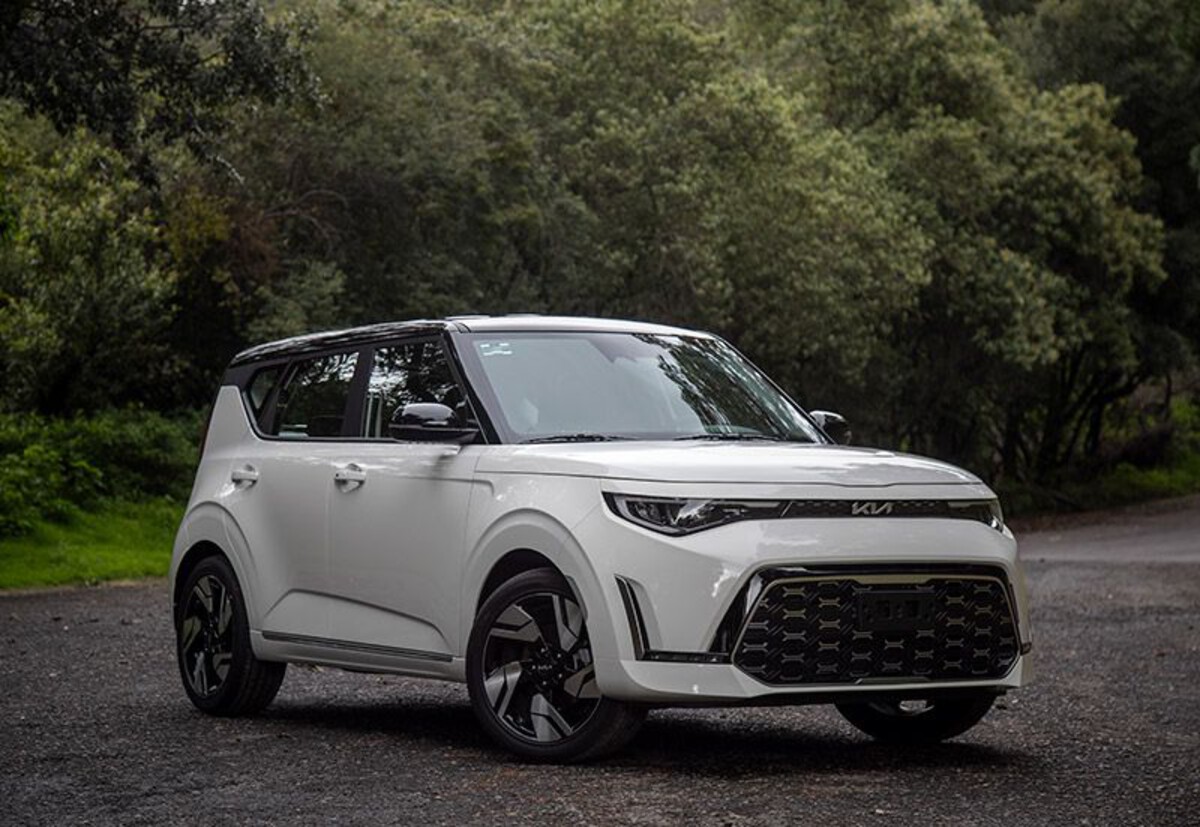
2. Kia Soul
While technically considered a compact crossover, the Kia Soul deserves high praise for its incredibly user-friendly step-in height—typically between 15 to 16 inches, depending on the trim.
What makes the Soul stand out is its boxy, upright design which contributes significantly to its ease of access. The large door cutouts, tall roofline, and low floor create a “walk-in” feeling that’s reminiscent of vehicles designed with accessibility in mind.
The Soul’s front and rear seats are positioned higher than those of a traditional car but lower than the average SUV, making them perfect for those who want that slightly elevated SUV feel without the hassle of a climb.
Getting in and out requires minimal knee movement—just pivot and sit. And for children, shorter adults, or elderly passengers, this level of entry simplicity is a gift. The flat door sill is also easy to navigate without tripping or needing a boost.
What’s especially appealing about the Soul is that it doesn’t compromise its fun personality or unique aesthetic for this practicality. It’s a funky, youthful car that just happens to be one of the most user-friendly vehicles when it comes to ingress and egress.
Its shape is honest: the tall, square body not only maximizes interior space but also keeps entry points tall and open. You won’t be ducking under sloped rooflines or squeezing through narrow doorways.
Even the cargo area is user-friendly. The rear liftgate opens wide and low, allowing easy loading and unloading without a big lift. Whether you’re getting in to go grocery shopping or helping an elderly parent settle into the passenger seat, the Kia Soul delivers one of the most considerate, thoughtfully accessible experiences in the compact crossover market, without trying too hard or demanding extra dollars.

3. Honda CR-V
The Honda CR-V has long been a leader in the crossover segment, and one of the reasons for its enduring popularity is its remarkable practicality. With a step-in height around 16 inches, it offers a near-perfect balance between the grounded feel of a sedan and the elevated ride of a traditional SUV. It’s designed for the real world, where comfort and usability are more important than aggressive styling or excessive height.
One of the CR-V’s key strengths is its door geometry. The front and rear doors are tall, wide, and open generously, providing ample room for entry—even for those who require walkers, crutches, or simply more space to maneuver.
The seating is elevated but not so high that it requires a step or hop. You simply open the door, pivot your hips, and lower yourself a modest distance—very intuitive and ergonomic. This design suits a wide range of body types and mobility levels, which is rare even among its competitors.
In the rear, the CR-V continues to impress. The back seats offer similar ease of entry, with minimal floor hump and low sills. Families will appreciate how easily strollers and car seats fit through the opening, while older passengers will enjoy not having to crouch or strain. It’s this type of consistent, across-the-cabin accessibility that makes the CR-V such a frequent recommendation for people buying with comfort in mind.
Lastly, Honda’s attention to detail shines through in small but meaningful ways—like grab handles on the ceiling, wide foot wells, and supportive, well-aligned seats. Combined with its smooth ride, fuel efficiency, and roomy cabin, the CR-V proves that low step-in height isn’t just for niche users—it’s a universal convenience that enhances the driving experience for everyone.
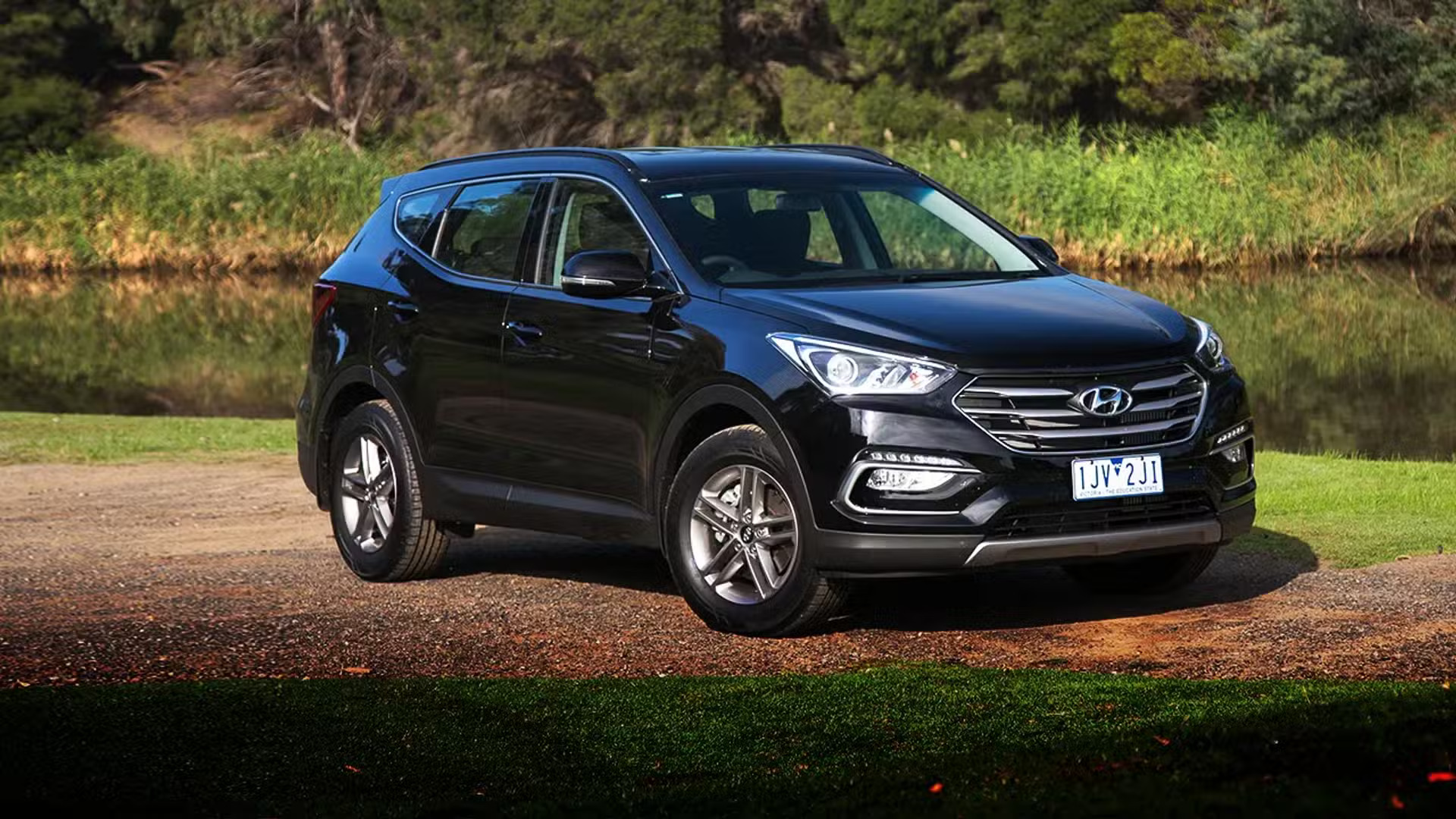
4. Hyundai Santa Fe (Front-Wheel Drive Models)
The Hyundai Santa Fe, particularly in its front-wheel-drive configurations, offers a step-in height of roughly 17 inches, which strikes a sweet spot for drivers looking for a mid-size SUV without mid-size climbing effort.
Its door openings are large and well-shaped, which makes it accessible for everyone from small kids to elderly grandparents. This entry height makes it feel less like a rugged SUV and more like a refined family vehicle—which is exactly what it’s aiming to be.
Unlike taller SUVs, the Santa Fe allows a gentle forward pivot into the driver’s seat rather than an upward climb. The cushion height aligns well with the average hip point, which means you don’t have to crouch or stretch awkwardly to enter.
It also means a lot less strain on your knees and back, especially if you’re doing multiple ins-and-outs over the course of the day. Hyundai’s use of ergonomic design and plush seating only enhances this comfort once you’re seated.
The Santa Fe’s platform also lends itself to a flatter floor design, which means passengers stepping into the rear won’t have to deal with major height differences or awkward gaps between door sill and seat cushion.
The doors themselves open wide enough for easy loading of child seats, groceries, and even mobility aids like folding walkers. Hyundai clearly understood the everyday tasks people use their SUVs for and designed with those routines in mind.
On top of that, you get a remarkably quiet and well-isolated ride, which makes the Santa Fe a favorite among people who prioritize comfort and usability over flash. It may not have the badge of a luxury marque, but when it comes to actual user experience, few vehicles in this price range can match its blend of low step-in height and refined comfort.
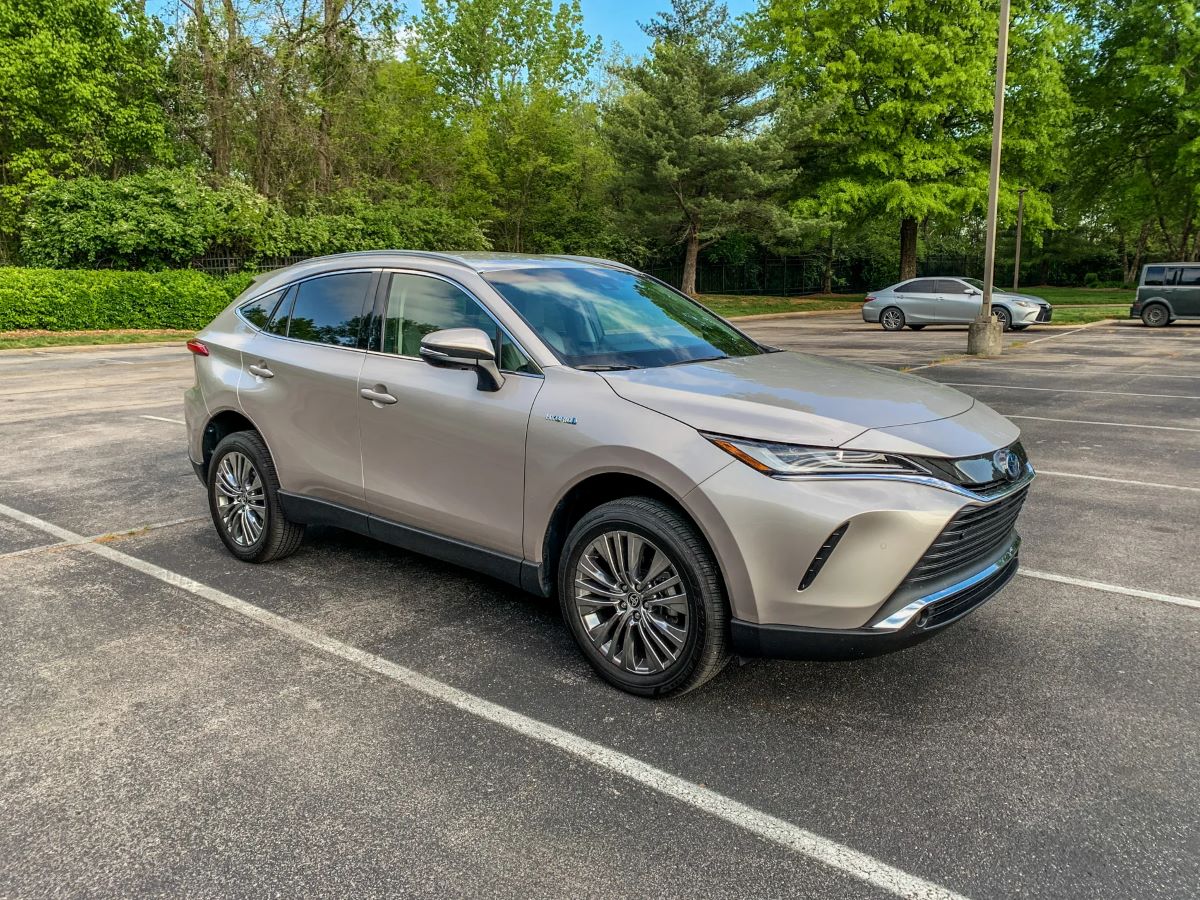
5. Toyota Venza
The Toyota Venza, a stylish midsize hybrid crossover, quietly excels in areas many other SUVs overlook—including easy ingress and egress, thanks to its low step-in height of around 16.5 inches.
Toyota has built the Venza on a car-like platform similar to the RAV4 but with more focus on elegance and ergonomics. What this means for the user is that you get the elevated seating position of an SUV with none of the burdensome climbing effort.
One of the first things you’ll notice about entering the Venza is how natural it feels. The seat base sits at hip height for most adults, eliminating the need to hoist yourself up or lower yourself awkwardly.
The door sills are low and flat, and the doors themselves open wide, allowing easy movement in and out without banging knees or ducking under a sloped roofline. The Venza’s sleek styling doesn’t compromise its functionality—it complements it.
The interior also deserves credit for its thoughtful design. The seating is plush and supportive, and Toyota has aligned the seats in such a way that even rear passengers can enter without a struggle.
This is particularly important for older adults or passengers who prefer sliding into a seat rather than stepping up and over a hump. It’s the kind of refinement you’d expect from a Lexus, but at a Toyota price point.
Finally, the hybrid drivetrain helps keep the floor packaging low without sacrificing trunk space or comfort. You’ll enjoy the bonus of fuel efficiency and a smooth ride, all while benefiting from a vehicle that prioritizes ease of access as much as it does tech and style. The Venza proves that you don’t have to climb a mountain to enjoy the SUV experience.
5 SUVs That Make You Duck to Get In
While SUVs are often lauded for their commanding ride heights, off-road prowess, or stylish design, not all are created equal in terms of accessibility.
Many popular SUVs require more physical effort to enter, either due to high step-in heights, narrow doorways, or low, sloping rooflines that demand ducking and twisting, especially for taller drivers and passengers. Below, we explore five such vehicles where entry requires extra thought (and sometimes flexibility).
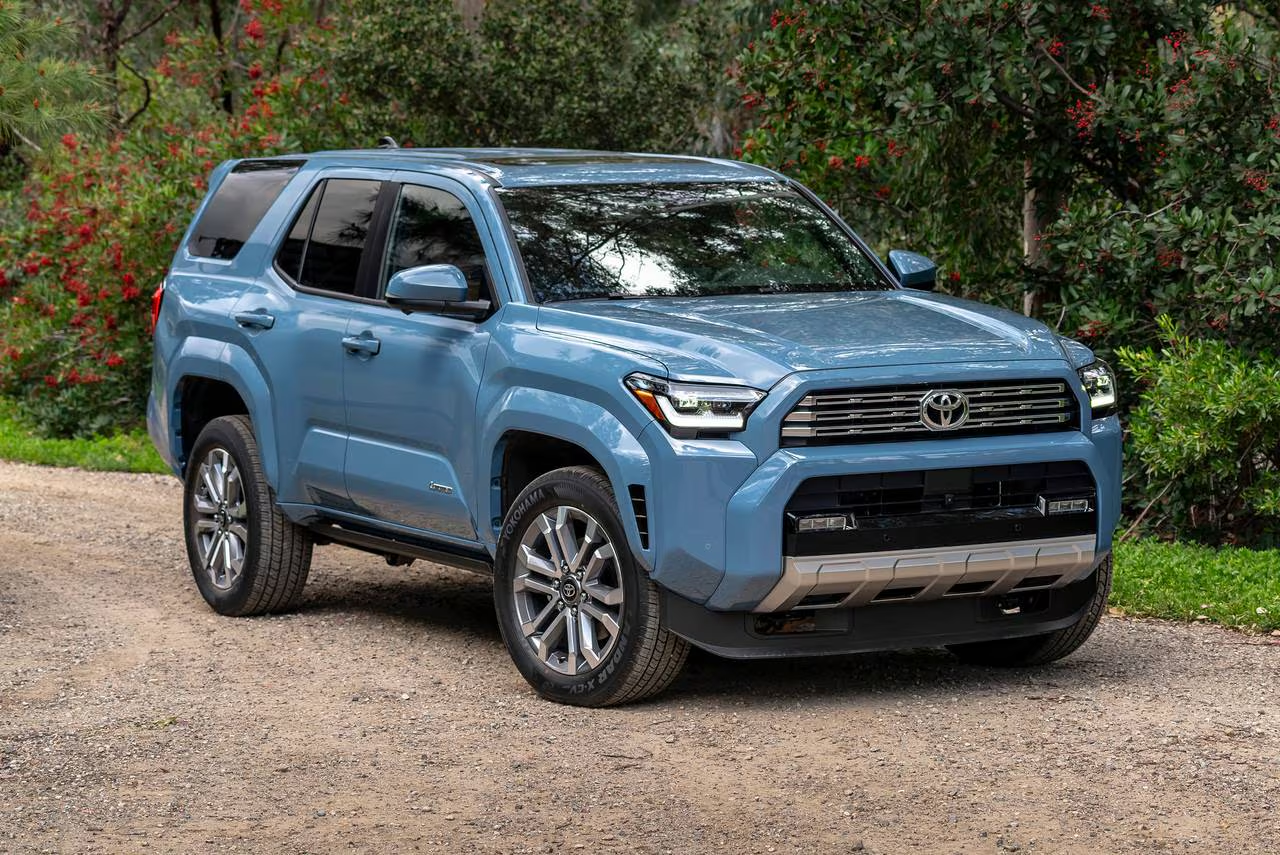
1. Toyota 4Runner
The Toyota 4Runner is a classic example of an SUV built for function over comfort, particularly off-road function. With a step-in height averaging 22 to 24 inches, the 4Runner demands a genuine “climb” to get inside.
This is compounded by a tall floor and a deep sill, which means you not only step high but also far across. For taller individuals, that’s not always a problem—but for shorter adults, elderly passengers, or anyone with joint pain, it can be a daily struggle.
The design of the 4Runner favors durability and ruggedness over ergonomic ease. The doors are solid and durable, but they don’t swing especially wide, making it difficult to enter gracefully, particularly in tight parking spaces.
Once inside, the seating position is high and upright, which some people love for visibility, but getting there involves pulling yourself up via the steering wheel or side grab handles. Without factory-installed running boards, it becomes a two-step maneuver: hoist, then sit.
One of the less obvious challenges is the re-entry experience after a long day or during bad weather. Muddy steps, icy sills, or tired knees can turn the 4Runner’s tall frame into a chore. While it excels on mountain trails and rugged backroads, it’s far from ideal in urban settings or for people who make frequent in-and-out trips, such as delivery drivers, parents, or commuters.
To its credit, Toyota has kept the 4Runner consistent in its mission. It was never meant to be an ergonomic champion; it was built to last 300,000 miles and conquer trails.
But buyers looking for easy access should weigh these considerations heavily. Unless you’re off-roading often or prefer a body-on-frame SUV for towing or durability, the 4Runner’s high step-in and climb-up cabin can feel punishing over time.
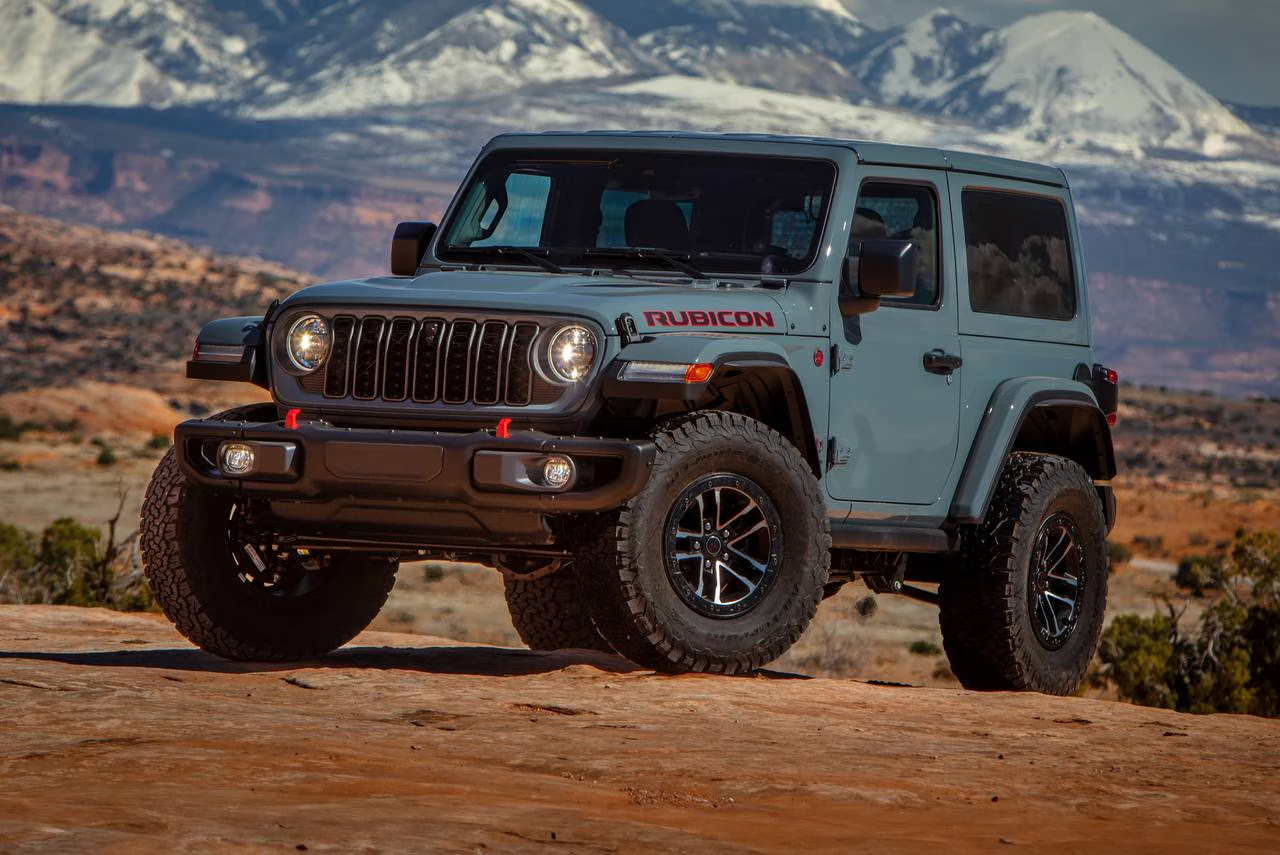
2. Jeep Wrangler (2-Door and 4-Door)
The Jeep Wrangler is iconic, unmistakable, and unapologetically rugged—but it’s not friendly to knees, backs, or tall foreheads. With a step-in height around 22 inches (even higher for Rubicon trims), the Wrangler often feels more like a ladder than a vehicle.
Most models lack standard running boards, so getting in is a matter of grabbing the A-pillar handle and pulling yourself up—and even then, you often have to duck under the roll cage and roof frame to squeeze in.
The 2-door variant makes entry even harder. The front doors are shorter and narrower, meaning you have to angle your body and swing a leg up to get in—especially annoying if you’re wearing a backpack or carrying groceries.
The 4-door Unlimited helps slightly with rear access, but it still suffers from tight door cutouts and a high cabin floor. Taller passengers often hit their head on the roof or side bar, especially when entering quickly.
Then there’s the added challenge of the Wrangler’s interior layout. The cabin is compact, vertical, and designed with utility in mind, not spacious luxury. You have to mind your knees and head every time you enter.
The placement of the side mirrors, the narrow footwell, and the tall transmission tunnel all create minor inconveniences that stack up in daily use. For adventurous spirits, these quirks are part of the charm; for comfort-seekers, it’s a red flag.
Jeep has taken steps to improve entry access in newer generations, offering optional steps, grab handles, and wider-opening doors, but the fundamental issue remains: the Wrangler is made for the trail, not the suburb. If you’re planning to use it as a daily driver and easy access is a top priority, the Wrangler may not be your best match.
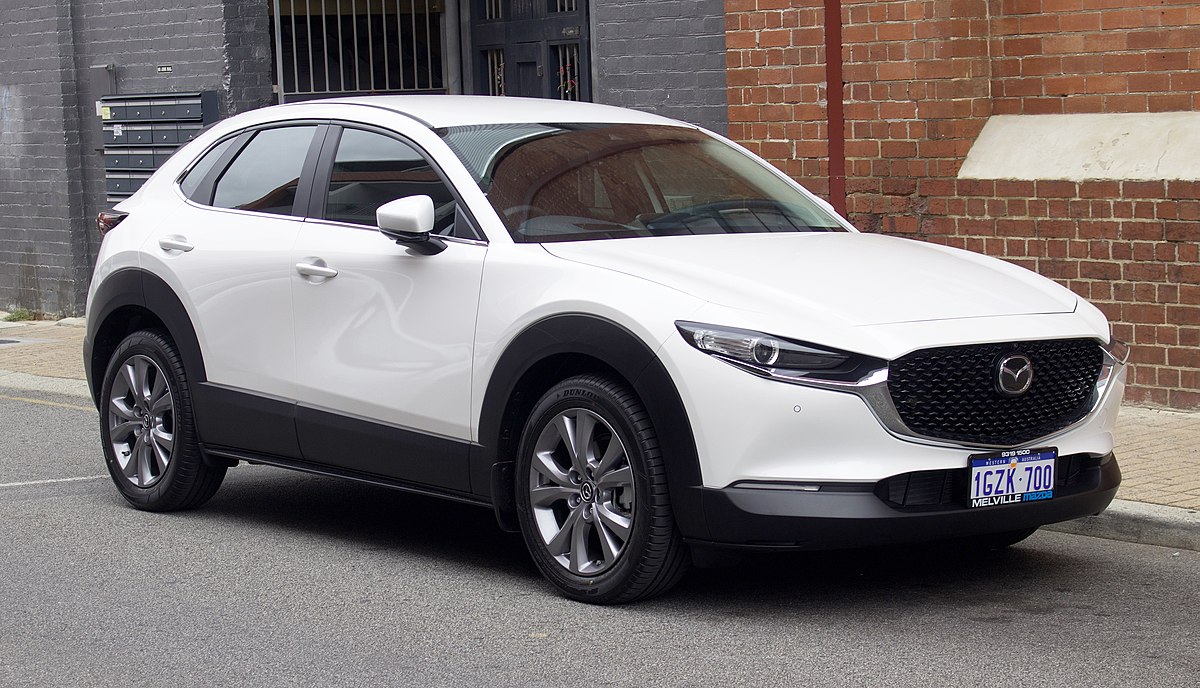
3. Mazda CX-30
The Mazda CX-30 might not seem like it belongs in a list with 4Runners and Wranglers—it’s a small, sleek, and urban-focused subcompact SUV. But paradoxically, it’s one of the most difficult SUVs to enter for taller people, thanks to a combination of a relatively tall step-in height (~18–19 inches) for its size, narrow door openings, and a low-sloping roofline that demands a fair amount of ducking.
First, the coupe-inspired roof shape makes the front door frames shorter than average. Taller drivers (around 6 feet and above) often need to dip their head and shoulders to avoid hitting the roof while getting in.
This isn’t just a small inconvenience—it’s a daily annoyance that can actually result in real discomfort. In the rear, things are worse. The back doors are smaller and lower, making access difficult for adults, especially if you’re helping children or elderly passengers.
Inside, the cabin is beautifully designed with premium materials, but its tight packaging doesn’t leave much forgiveness during entry. The center console is wide and protrudes into the leg space, while the seats are slightly lower than you’d expect for a crossover.
This forces taller drivers into a drop-down and scoot-in motion, rather than a natural slide. The result is a car that feels lower than its SUV badge implies—more like a hatchback with limited headroom.
It’s worth noting that the CX-30’s issues don’t extend to driving pleasure. It’s one of the most refined and sporty-driving crossovers in its class. But for people who value ease of entry, especially those who regularly enter and exit the car many times a day, the CX-30’s beautiful design becomes a physical inconvenience. It’s a prime example of form triumphing over function, at least in terms of entry ergonomics.
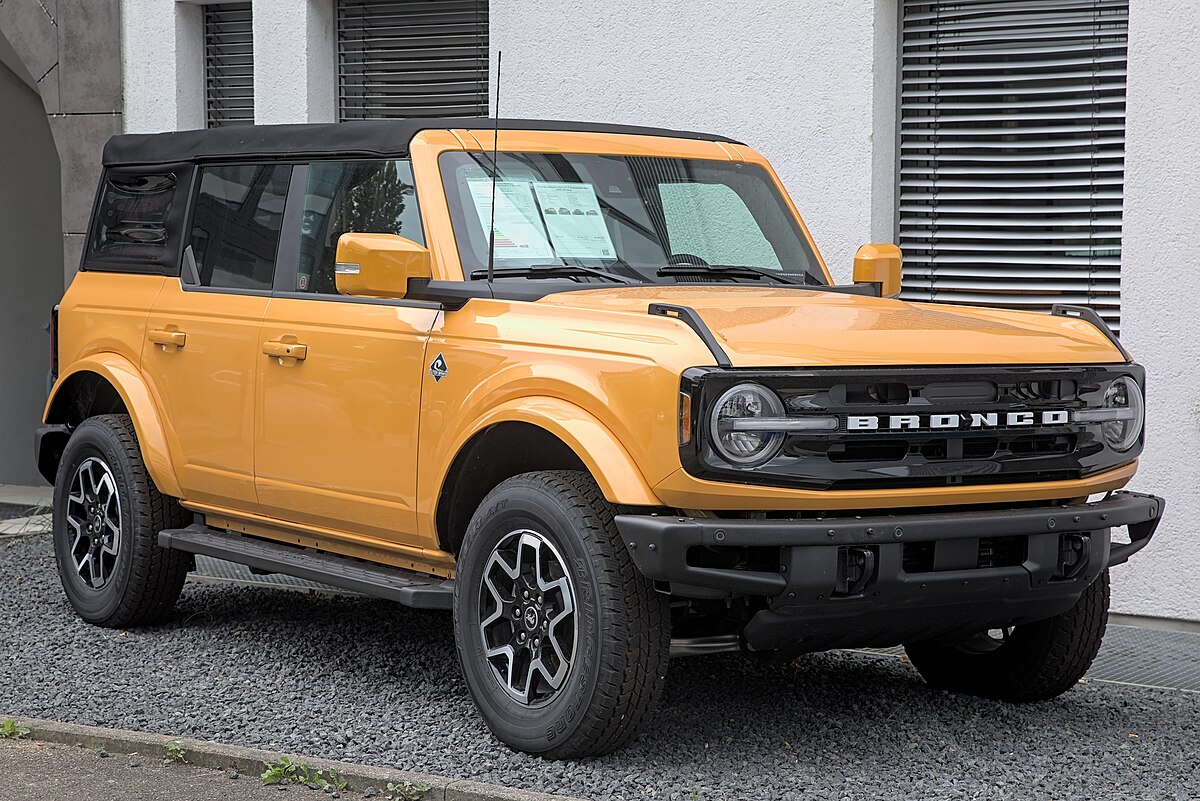
4. Ford Bronco (2-Door)
The Ford Bronco is a modern throwback to old-school utility vehicles—but with that retro charm comes old-school inconvenience, particularly in the 2-door model. The step-in height ranges from 22 to 25 inches, depending on tire size and trim. This alone requires a climbing motion to get in, but the short doors and limited rear access make things even more awkward.
Like the Wrangler, the Bronco offers removable doors and roof panels. But even with doors in place, they’re relatively short, making it harder for taller people to enter without ducking.
The A-pillar and roll bar obstruct the natural head path, meaning most drivers and front passengers must bend, twist, and lower themselves all at once. For those with flexibility or back issues, this can be a real deterrent.
Getting into the rear seats is even more challenging. In the 2-door model, you must first fold the front seats forward (often manually), then maneuver through a tight space into a bench seat that sits high off the floor. It’s neither elegant nor quick. The tall ground clearance that makes the Bronco excellent off-road becomes a daily obstacle on pavement.
For some buyers, this trade-off is worth it. The Bronco is undeniably cool and capable, but if your daily routine involves multiple people getting in and out—especially kids or elderly relatives—it becomes a cumbersome experience.
Ford does offer running boards and grab handles as accessories, but those are add-ons, not baked-in solutions. It’s a vehicle that makes a statement, but that statement includes a fair amount of ducking and climbing.
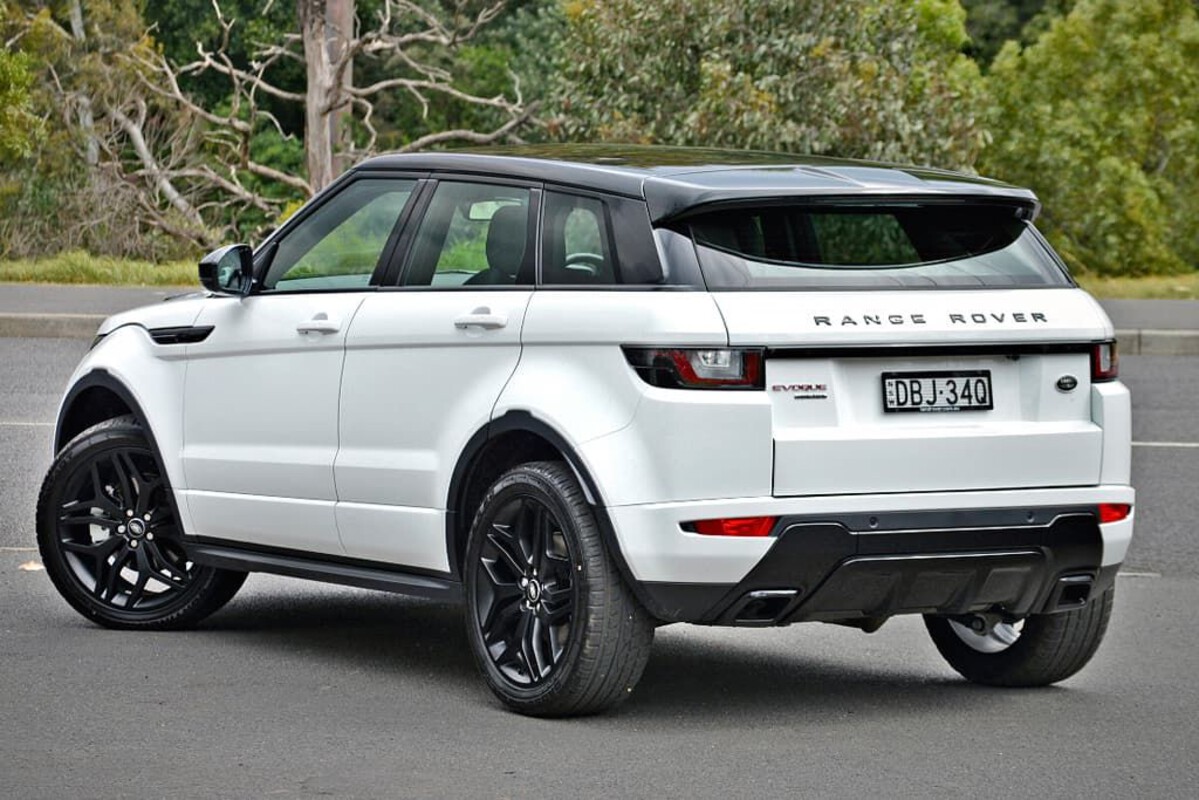
5. Range Rover Evoque
The Range Rover Evoque is a stylish, premium compact SUV aimed at younger luxury buyers—but while it looks sleek on the outside, it’s one of the most difficult SUVs to enter in this class due to its low roofline, narrow door openings, and seating geometry.
Despite a moderate ground clearance, the step-in height feels taller than it is because the door sills are deep and the doors cut low into the roofline. The Evoque’s coupe-inspired shape dramatically reduces the available headroom during entry.
The doors are angled and don’t open very wide, so you’re required to duck and angle yourself to avoid bumping your head—especially in the rear seats. It’s a jarring contrast to the brand’s more upright models like the Velar or full-size Range Rover, which prioritize comfort and visibility.
Inside, the Evoque’s seating is relatively low for an SUV. You don’t climb up as much as drop in, which would be fine if the doors allowed a clear path—but they don’t.
For passengers in skirts, tight clothing, or with mobility concerns, entry and exit become unnecessarily complex. It’s particularly annoying for rear passengers, who deal with tight legroom and headroom and must maneuver through smaller door apertures.
Despite these challenges, the Evoque remains a popular choice for buyers prioritizing style over utility. It offers a beautiful cabin, excellent materials, and engaging road manners. But Range Rover has clearly leaned into form over function with the Evoque. While it delivers the badge and the look, it makes daily entry and exit a cramped affair, especially compared to the more practical shapes found even in lower-priced SUVs.
Also Read: 5 Cars With Best Smartphone Integration And 5 With Poor
Where Comfort Meets Capability – Making the Right Entry Decision
As we’ve seen across both ends of the SUV spectrum, not all vehicles treat the act of entry and exit the same way. While this may seem like a small consideration next to torque specs or leather upholstery, in practice, it can define your daily relationship with your vehicle.
The best SUV for you isn’t just the one with the biggest infotainment screen or highest ground clearance—it’s the one that works with your body and your lifestyle, not against it.
On one side, we explored vehicles that get the ergonomics just right. Models like the Subaru Forester, Honda CR-V, and Toyota Venza don’t ask you to climb, squat, or twist to get inside. Their step-in heights hover in that perfect middle zone—not too low to feel like a car, not too high to require effort.
Combine that with thoughtful interior layouts, flat floors, wide door swings, and strategic seat placement, and you’ve got vehicles that feel welcoming the moment you open the door. These SUVs are ideal for older drivers, people with injuries or mobility concerns, busy parents with car seats, or just anyone who values comfort and ease over flash and flair.
Even smaller entries like the Kia Soul and Hyundai Santa Fe offer surprisingly refined ingress and egress for the price, reminding us that luxury isn’t always found in leather—it’s found in smart design.
These vehicles don’t scream “rugged” or “adventurous,” but what they offer is perhaps even more valuable: predictable, comfortable, daily usability. And in a market crowded with intimidatingly tall crossovers and wannabe off-roaders, that’s a rare and appreciated trait.
On the other end of the spectrum, the Toyota 4Runner, Jeep Wrangler, and Ford Bronco proudly wear their toughness like a badge. They were built for trails, rocks, and rivers, not smooth mall parking lots.
Their high step-in heights, upright stances, and short, narrow doors all add to the visual drama—but also to the daily struggle for those who aren’t in peak physical form. These vehicles demand effort: you pull yourself up, you duck to avoid hitting your head, and you often need running boards or side steps just to ease the climb.
Similarly, vehicles like the Mazda CX-30 and Range Rover Evoque show how aesthetics can compromise function. Their sleek silhouettes and sporty stances may photograph beautifully, but they narrow the door openings and lower the head clearance.
For taller individuals or anyone with flexibility limitations, even these so-called “urban crossovers” can be surprisingly challenging to get into, especially in tight spaces or low lighting.
The good news is this: the market offers something for everyone. The key is knowing what to prioritize. If ease of access is high on your list—whether due to age, injury, lifestyle, or long-term comfort—there are excellent choices out there that don’t force you to compromise on style, performance, or utility.
And if you lean more toward adventure or image and don’t mind a bit of physical effort to climb into your rig, that’s valid too—but it’s better to make that decision with full awareness of what you’re getting.
In the end, SUV ownership isn’t just about specs or style—it’s about daily rituals. It’s about how easily you and your passengers can enter and exit, how welcoming the cabin feels, and how much your vehicle supports your life, not complicates it. The choice between stepping up or ducking down isn’t just about posture—it’s about priorities. And now, hopefully, you’re better equipped to make the right one.

